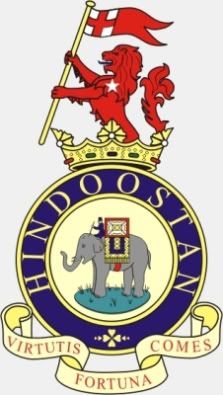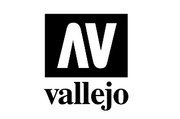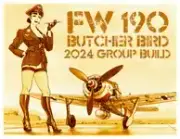Review - Riich Models Universal Carrier MkI kit #35011
Sept 20, 2013 9:00:58 GMT -5
pantherf..-Email Not Valid likes this
Post by Smudge on Sept 20, 2013 9:00:58 GMT -5
Riich Models recently released a 1/35 scale Universal Carrier MkI, kit#35011, the feature of this review.
Box Art

Firstly; kudos to Riich for producing what, IIRC, is the first MkI Carrier in styrene. Tamiya does make the MkII of course, but this is really showing its age so this model from Riich is very welcome.
The Carrier was introduced in 1940 and formed the basis for a series of small, lightly armed, tracked, vehicles. It was used, amongst other things, for carrying personnel (six pax), medium MG’s, mortars; it was used as an armoured observation post vehicle, a radio carrier, and flamethrower. It was used by all arms in all theatres and by British, Commonwealth and ‘Free Forces’ like The Polish and Czechs. It was also provided to The Red Army under lend lease arrangements.
Contents
Upon opening the small but perfectly formed box we find a huge amount of sprues. In total there are (all sensibly bagged) 13 sprues in light grey and clear injection moulded styrene. There are also three frets of PE, two sheets of decals, a bag of springs, brass tube, chain and thread. It is finished off with a 24 page instruction booklet and a two page full colour painting/marking guide.

I did try to count the parts but there are too many; it blew my mind. The parts count is huge for something that will be approx 10.5cm when finished. The details upon completion will be impressive including a highly detailed engine, engine, driver and troop compartments, radio, figures and small arms.


Instructions
These look well laid out but having not yet started the kit I can't comment on the accuracy or ease of use. I have heard there are issues with the instructions in stage six, concerning the rear axle, so take care here. If there is an error it may be corrected by now; mine is an early release kit. Like with all complicated kits it is important to read the instructions thoroughly. I will post the instructions separately and welcome any comments from those having started/built the kit.
Quality
The quality is outstanding IMHO. Just minor seams lines and little or no flash to contend with on the vehicle parts although the figures are a tad rougher but still very good. There are extra attachment points in the form of separate nodules to contend with adding to clean up but these do help improve the level of detailing possible while reducing ejection pin marks so I’m happy with that.
Sprues
The sprues are as follows
Sprue A; flat-pack hull parts, hull detailed parts etc. Note because these are produced flat pack style Riich have managed to achieve a remarkeable level of detail on exterior and interior sides of the parts.


Sprues B&C; road and drive wheels and track links etc. Note the tracks are link and length which is very sensible for such tiny pieces IMHO


Sprue D; rear drive axle, and suspension parts/bogies etc.

Sprue E; hull sides, track guards, and fenders etc. Again these are extremely well detailed on both exterior and interior faces. The track guards and fenders are commendably thin.


Sprue F; engine compartment sides, fuel tanks, and interior detailing parts etc. Again these are extremely well detailed on both exterior and interior faces.

Sprue G; highly detailed Ford V8 engine and radiator etc. Unfortunately this will be hidden upon completion unless the modeller can figure out how to show the engine covers open.

Sprue H; clear parts for the headlights and observation slit glazing.

Sprue J; towing shackles, pioneer tools, POW/POL cans, and fire extinguishers.
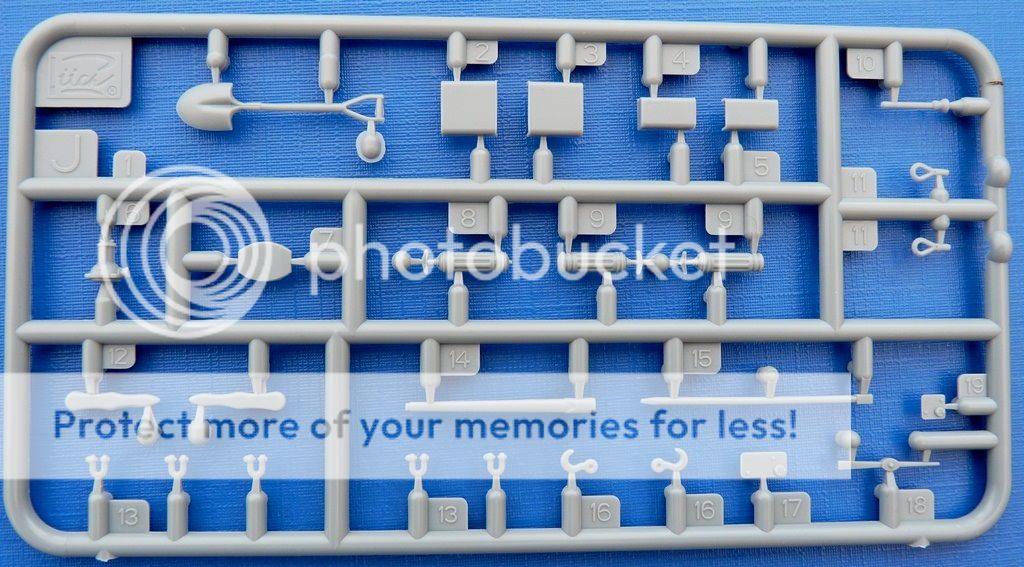
Sprue K; this includes the vehicles Bren Gun, SF/AA tripod (folded), and radios. Note; parts are included for a No.11 AND No.19 radio; the instructions only show the No.11 assembled and fitted which is good because the aerial base is incorrect for a No.19. If fitting the No.19 then different aerial bases will need to be sourced. PE and styrene parts are included for the No.19 radio guards. Why supply a No.19 radio at all though? Maybe there could be a MkII Carrier in the pipeline?
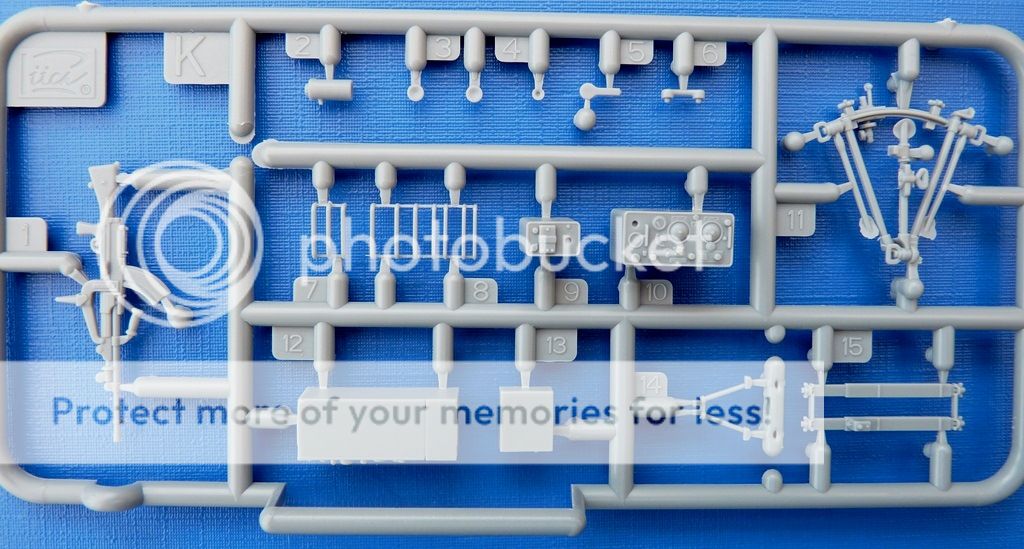

Sprues Wg3/Wh; small arms. Two extra Bren Guns and three Lee Enfield No.4's are supplied. Note the Enfield’s are probably no good for markings options 3 (Libya, 1941) and 4 (UK, 1941) because they weren’t generally issued until late 1942, initially re-arming troops in the UK. The weapons are generally very good.


Photo Etch; three frets are included. More parts than I care to count



Other parts; these include the springs in two sizes, with brass rods, for the suspension. These scare me a tad and I would have liked optional styrene parts although there’s no doubting the end result will be exceptional. Fine chain and thread is also provided for the Carrier’s tow rope.



Decals; these are provided for four vehicle markings options (see below) and also for the figures and are very well printed. Rank, Divisional and National insignia is provided for the three Canadian troops. The rank insignia can be used for other British or Commonwealth nations just check your references.

Sprue Z, Figures; three figures are provided, wearing Khaki Drill uniforms suitable for Africa, The Middle East, Sicily and Italy. Although the KD was worn by other nations two are provided with RAC helmets which was, I think, limited to the Canadians. This I think makes them limited to the No.1 marking option (Canadian 1st Div, Italy 1943) only. Swap the heads/headgear for the Libya option and you’ll be ok. They are no good however for the UK and NWE (Holland) options…although Riich have released a separated set of figures in temperate BD uniforms for the Carrier, for just this scenario.

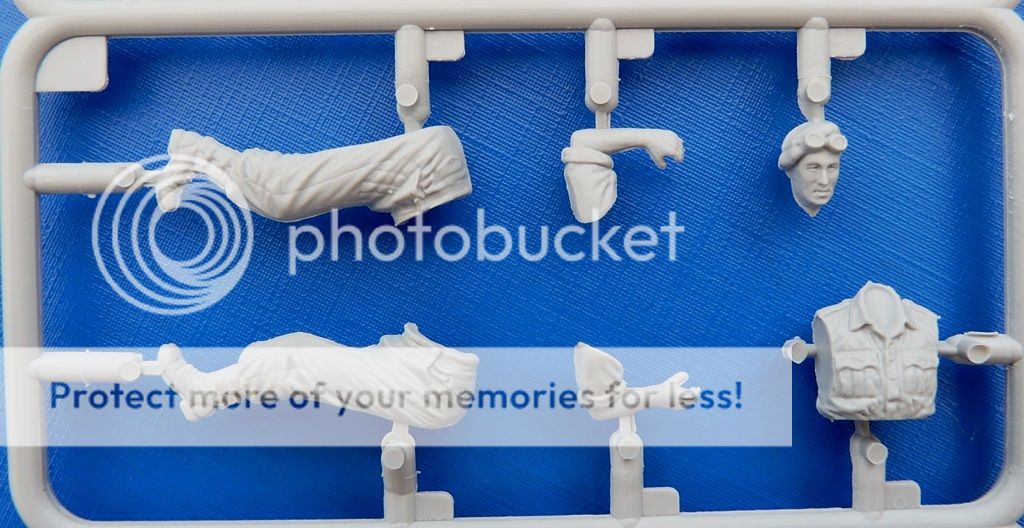

Markings/colours.
I reckon the box art is well off. It doesn’t match that on the marking/paining instructions. The options are…
Option 1: T12642 (KATIE), Prince Edward Regiment, 1st Canadian Infantry Brigade, 1st Canadian Infantry Division, Italy 1943. I reckon this is wrong based on the photo below which looks to be a SCC2 Service Brown basic colour with ‘Light Mud’ paint applied as a disrupter. Note I think Riich may have altered the colour options to reflect this, but I received an early production kit.


Option 2: T142048, ‘Olsztyn’ 10th Polish Dragoons Regiment, 10th Polish Armoured Cavalry Brigade, Holland 1944. This is the correct SCC15 Olive Drab used from 1944-1945.

Option 3: T12505, 19th Battalion, 2nd New Zealand Division, Libya, December 1941. Depicted in the Caunter Scheme.

Option 4: T12923, ‘Hells Angel’, Royal Hamilton Light Infantry, 2nd Canadian Infantry Division, Aldershot, England, 6 June 1941. This looks to be in a correct scheme of KG3 Khaki Green ( although an alternative was SCC2 Service Brown) with a disrupter of SCC14 Black (although it could also be SCC1A, Very Dark Brown).

Conclusion
This is a highly detailed an accurate model of the MkI Universal Carrier; I think the Tamiya MkII will be consigned to history as a result of its release. I think it will satisfy the most demanding of modellers, and even the intermediate ones though some may find it a challenge. It may be a pretty difficult kit for the novice though. Whatever, don’t expect to put this together over the weekend, it is, I think, a demanding kit. The PE is very useful; although not always my ‘cup of tea’ I think it’s possibly a little overused in places (styrene would have sufficed IMHO in some places) though many will like the sharpness it provides. The suspension will be testing I think although there’s no doubt in my mind the end result will be great.
On saying that, the detail is outstanding and the accuracy superb. For those wanting to save time leave out the engine? This can be used in any diorama it is a small kit in its own right. I think it’s a great model and I’m keeping my fingers crossed for that MkII.
Highly recommended but not one for the faint hearted.
I’d like to thank Riich for the review sample
Smudge
Box Art

Firstly; kudos to Riich for producing what, IIRC, is the first MkI Carrier in styrene. Tamiya does make the MkII of course, but this is really showing its age so this model from Riich is very welcome.
The Carrier was introduced in 1940 and formed the basis for a series of small, lightly armed, tracked, vehicles. It was used, amongst other things, for carrying personnel (six pax), medium MG’s, mortars; it was used as an armoured observation post vehicle, a radio carrier, and flamethrower. It was used by all arms in all theatres and by British, Commonwealth and ‘Free Forces’ like The Polish and Czechs. It was also provided to The Red Army under lend lease arrangements.
Contents
Upon opening the small but perfectly formed box we find a huge amount of sprues. In total there are (all sensibly bagged) 13 sprues in light grey and clear injection moulded styrene. There are also three frets of PE, two sheets of decals, a bag of springs, brass tube, chain and thread. It is finished off with a 24 page instruction booklet and a two page full colour painting/marking guide.

I did try to count the parts but there are too many; it blew my mind. The parts count is huge for something that will be approx 10.5cm when finished. The details upon completion will be impressive including a highly detailed engine, engine, driver and troop compartments, radio, figures and small arms.


Instructions
These look well laid out but having not yet started the kit I can't comment on the accuracy or ease of use. I have heard there are issues with the instructions in stage six, concerning the rear axle, so take care here. If there is an error it may be corrected by now; mine is an early release kit. Like with all complicated kits it is important to read the instructions thoroughly. I will post the instructions separately and welcome any comments from those having started/built the kit.
Quality
The quality is outstanding IMHO. Just minor seams lines and little or no flash to contend with on the vehicle parts although the figures are a tad rougher but still very good. There are extra attachment points in the form of separate nodules to contend with adding to clean up but these do help improve the level of detailing possible while reducing ejection pin marks so I’m happy with that.
Sprues
The sprues are as follows
Sprue A; flat-pack hull parts, hull detailed parts etc. Note because these are produced flat pack style Riich have managed to achieve a remarkeable level of detail on exterior and interior sides of the parts.


Sprues B&C; road and drive wheels and track links etc. Note the tracks are link and length which is very sensible for such tiny pieces IMHO


Sprue D; rear drive axle, and suspension parts/bogies etc.

Sprue E; hull sides, track guards, and fenders etc. Again these are extremely well detailed on both exterior and interior faces. The track guards and fenders are commendably thin.


Sprue F; engine compartment sides, fuel tanks, and interior detailing parts etc. Again these are extremely well detailed on both exterior and interior faces.

Sprue G; highly detailed Ford V8 engine and radiator etc. Unfortunately this will be hidden upon completion unless the modeller can figure out how to show the engine covers open.

Sprue H; clear parts for the headlights and observation slit glazing.

Sprue J; towing shackles, pioneer tools, POW/POL cans, and fire extinguishers.

Sprue K; this includes the vehicles Bren Gun, SF/AA tripod (folded), and radios. Note; parts are included for a No.11 AND No.19 radio; the instructions only show the No.11 assembled and fitted which is good because the aerial base is incorrect for a No.19. If fitting the No.19 then different aerial bases will need to be sourced. PE and styrene parts are included for the No.19 radio guards. Why supply a No.19 radio at all though? Maybe there could be a MkII Carrier in the pipeline?


Sprues Wg3/Wh; small arms. Two extra Bren Guns and three Lee Enfield No.4's are supplied. Note the Enfield’s are probably no good for markings options 3 (Libya, 1941) and 4 (UK, 1941) because they weren’t generally issued until late 1942, initially re-arming troops in the UK. The weapons are generally very good.


Photo Etch; three frets are included. More parts than I care to count



Other parts; these include the springs in two sizes, with brass rods, for the suspension. These scare me a tad and I would have liked optional styrene parts although there’s no doubting the end result will be exceptional. Fine chain and thread is also provided for the Carrier’s tow rope.



Decals; these are provided for four vehicle markings options (see below) and also for the figures and are very well printed. Rank, Divisional and National insignia is provided for the three Canadian troops. The rank insignia can be used for other British or Commonwealth nations just check your references.

Sprue Z, Figures; three figures are provided, wearing Khaki Drill uniforms suitable for Africa, The Middle East, Sicily and Italy. Although the KD was worn by other nations two are provided with RAC helmets which was, I think, limited to the Canadians. This I think makes them limited to the No.1 marking option (Canadian 1st Div, Italy 1943) only. Swap the heads/headgear for the Libya option and you’ll be ok. They are no good however for the UK and NWE (Holland) options…although Riich have released a separated set of figures in temperate BD uniforms for the Carrier, for just this scenario.



Markings/colours.
I reckon the box art is well off. It doesn’t match that on the marking/paining instructions. The options are…
Option 1: T12642 (KATIE), Prince Edward Regiment, 1st Canadian Infantry Brigade, 1st Canadian Infantry Division, Italy 1943. I reckon this is wrong based on the photo below which looks to be a SCC2 Service Brown basic colour with ‘Light Mud’ paint applied as a disrupter. Note I think Riich may have altered the colour options to reflect this, but I received an early production kit.


Option 2: T142048, ‘Olsztyn’ 10th Polish Dragoons Regiment, 10th Polish Armoured Cavalry Brigade, Holland 1944. This is the correct SCC15 Olive Drab used from 1944-1945.

Option 3: T12505, 19th Battalion, 2nd New Zealand Division, Libya, December 1941. Depicted in the Caunter Scheme.

Option 4: T12923, ‘Hells Angel’, Royal Hamilton Light Infantry, 2nd Canadian Infantry Division, Aldershot, England, 6 June 1941. This looks to be in a correct scheme of KG3 Khaki Green ( although an alternative was SCC2 Service Brown) with a disrupter of SCC14 Black (although it could also be SCC1A, Very Dark Brown).

Conclusion
This is a highly detailed an accurate model of the MkI Universal Carrier; I think the Tamiya MkII will be consigned to history as a result of its release. I think it will satisfy the most demanding of modellers, and even the intermediate ones though some may find it a challenge. It may be a pretty difficult kit for the novice though. Whatever, don’t expect to put this together over the weekend, it is, I think, a demanding kit. The PE is very useful; although not always my ‘cup of tea’ I think it’s possibly a little overused in places (styrene would have sufficed IMHO in some places) though many will like the sharpness it provides. The suspension will be testing I think although there’s no doubt in my mind the end result will be great.
On saying that, the detail is outstanding and the accuracy superb. For those wanting to save time leave out the engine? This can be used in any diorama it is a small kit in its own right. I think it’s a great model and I’m keeping my fingers crossed for that MkII.
Highly recommended but not one for the faint hearted.
I’d like to thank Riich for the review sample
Smudge







